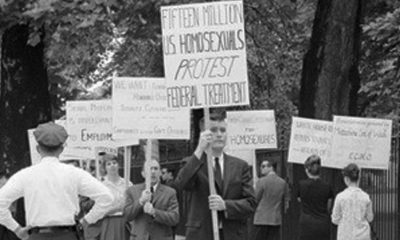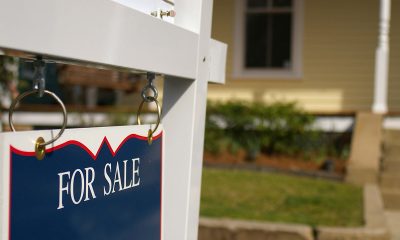Arts & Entertainment
What the Blade means to me
Former employees reflect on impact of the newspaper
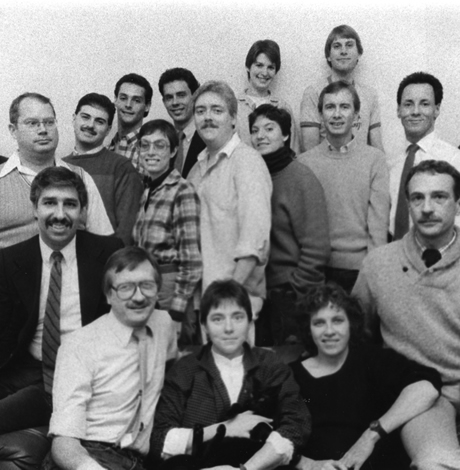

As we wrap our yearlong celebration of the Washington Blade’s 50th anniversary, we wanted to provide space to former employees to reflect on what the newspaper means to them. Here is a sampling of what they had to say. Thanks to everyone for contributing.
JERYL PARADE, Blade account executive, 2009-2016

“I need to tell you this is the last issue of the newspaper you will be delivering. It’s not you. It’s us. We’re shutting down.”
“What will you do?”
“Look for a job. But not here. In D.C.
“You should apply at the Blade.”
“The Blade?”
“We’ve been there trying to get their distribution business. You should see the offices. They’re beautiful”.
“Yeah. OK. Thanks for the advice.” But I’m not gay.
On July 26, 2009, I emailed publisher Lynne Brown my three-page resume with 18 bullet points of publishing accomplishments. She responded on July 31, 2009. “Thanks for writing. There are only opportunities in life.”
In a subsequent email we agreed to meet on Wednesday at 11 a.m. Lynne wrote, “We are generally a casual group. So dress to be yourself.”
I did not know if she meant this or was being crafty. Should I really show up in a ‘90s Goth thing? I decided on a business suit. The Blade is, after all, a business.
And then some!
Happily I got the job. It was advertising sales. I had been a manager for 25 years, but when you work with clients, as I had, you are in sales.
I am able to tell on the first day of a new job if it is going to work out. On that first day — even though all I did was read the employee manual — I felt good. I was breathing in fresh air.
The next day I made my first sales call. It resulted in a sale. You know it can take 10 or more calls or emails to connect with someone and five or more contacts with said someone to seal the deal. If you’re lucky. Not so with the Blade. I was batting 1,000 percent!
Still, I was feeling stilted compared to my debonair coworkers. I remember seeing a team photo from the previous holiday season. Everyone dressed in black. I don’t think anyone was smiling. I would never be as cool as that.
About two and a half months into my tenure, on Monday, Nov. 16, 2009, we came in to work and were told (by the then parent company) to go home. Plenty has been written about the days and weeks that followed. I won’t go into that here. I consulted with my father about what to do next. I told him how the employees had a plan to keep publishing. My dad advised me to stay. He said, “It might be better.”
From then on I learned how to work on a commission-only basis and have confidence in my own and our success. I had always worked at a desk, in an office. Now I was free. An advertiser would call me on my cell while I was on the streets of downtown D.C. How cool was I now? I was Blade cool.
One of my most vivid memories of working for the Blade is from 2013 in the Venetian Jewish Ghetto. My friend was on a tour while I was in the piazza taking a call from the Washington Women’s Rugby Football Club (DC Furies) about advertising in our LGBTQ Sports Issue. I had sent an email blast earlier that week from our hotel room in Rome to let everyone know I had previewed the content and it was amazing!
Being “not gay” was never an issue. My advertisers and co-workers did not care which of the letters comprising the acronym I was. I had always assumed it was A for Ally. Now I know. It’s G. For Grateful.
KEN SAIN, Blade news editor, 2003-2005
Perhaps the most important thing we have learned since Stonewall is that visibility is everything. Many of the advances the LGBTQ community has made in these past decades are because ordinary people had the courage to come out.
Each generation has made it easier for the next, and the current one will make it even easier for those who follow. It was far easier in those early years for an Anita Bryant and others to go argue for discrimination when it was just some drag queens no one knew in San Francisco who were denied rights and being assaulted.
It’s a lot harder to make that case when it’s your uncle, or sister, or child.
So yes, give credit to the leaders for inspiring us and willing to be the face that took the criticism. But remember that each of us who had the courage to tell our truth to family and friends and co-workers also did our part to help change public opinion.
And give some credit to the Washington Blade. For 50 years it has been covering the struggle, helping to inspire new generations by telling the stories of those who came before. It was a source of news for our community when others didn’t even acknowledge our issues. The Blade did so while maintaining the highest standards of journalism and ethics.
I know from my time as news editor what a vital role the Blade has in the community. I like to think that by covering the community fairly and with integrity we achieved our goals of informing and in some cases entertaining readers. I also believe that by putting a spotlight on the stories of our community, we helped moved the needle on public opinion in some small way.
I am deeply proud of my time working for the Blade and the work we did. There is something special about working with quality people on a righteous cause. Our cause was to show that we could do great journalism for LGBTQ readers and keep them informed of the issues that that in many cases no one else was covering.
In doing so, we helped make our community more visible. And as we’ve learned during these past 50 years, being more visible is one key to being accepted.
Happy 50th anniversary, Blade.
KRISTINA CAMPBELL, Blade reporter, managing editor and editor, 1992-2002
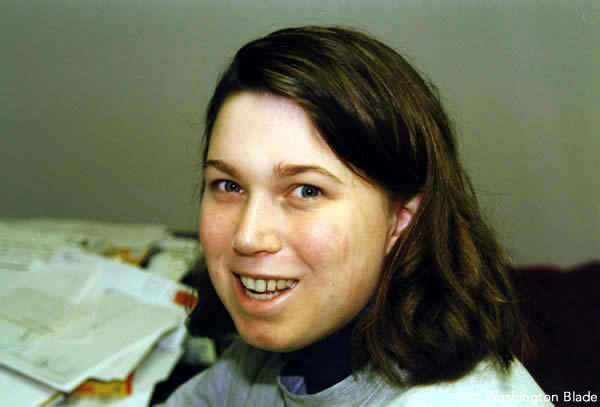
The thing I remember most about the Blade was the company’s elegant balance as a fun and often lighthearted atmosphere that was also a professional workplace where we were serious about our mission and our product. I felt close to everyone in the newsroom, especially as I rose the editor ranks and started supervising people who had been my colleagues. It was an honor to be trusted with that role. I remember the work being challenging but rewarding, every day of my tenure there, until the ownership changed and some workplace issues started clouding my focus on the news. I felt an obligation to the community the entire time I worked at the Blade, because it was so important to get the information correct, to be fair, to create a record for information and developments that the mainstream media was only beginning to cover. And I also felt a responsibility to act with objectivity and to give fair and respectful treatment to adversaries of the community or its civil rights work. That was sometimes difficult, but it made me a better journalist and, I think, a better person.
I grew up in that job, and I had fun doing it. It was an exciting time to cover gay civil rights issues — news was always developing and it felt like we as a community were on the brink of big things. Indeed, the big things gradually took shape. I often think about the current presidential administration and how working at the Blade would be so different now, and likely frustrating, as significant pieces of the progress we covered is at risk of (or in the process of) being rolled back.
The Blade was, I insisted then and maintain now, the most reliable and professional source of hard news about the gay movement anywhere in the world when I worked there, for most of the 90s and into the next decade, And that was quite something to be part of. I always had such deep respect for the people who hired me and shaped me into a professional — Don Michaels and Lisa Keen — because they gave their careers to being the daily historians of a civil rights movement. The same is true for the longest-tenured Blade staffer in history, Lou Chibbaro Jr., whose professionalism and hard-nosed reporting style made each issue of the paper better. I was fond of everyone on the staff, but those three really made that newspaper into an institution I was proud to participate in.
RHONDA SMITH, Blade reporter, features editor, 1997-2005; intern, 1984

I was a journalism undergraduate at Howard University during the early 1980s when I became an intern at the Washington Blade under the tutelage of Lisa Keen and Don Michaels. At the time, I was just coming out and trying to find my way in the world as the daughter of a Southern Baptist minister and a public school teacher from a small town in Texas. The Blade helped shape a key part of my identity in a way that few others did at that time.
I get nitty-gritty details about the LGBTQ experience from the Blade that other media organizations might still tend to gloss over. Writers and editors at the Blade take a deeper dive on topics that help determine the extent to which we thrive. The Blade reminds me that my sexual orientation is a blessing that should be embraced.
My favorite memory working at the Blade: Watching Lou Chibbaro, Jr. get the story.
BRIAN MOYLAN, Blade intern, reporter and features editor, 2000-2006
Gather round, children and let Grandpa Moylan tell you about the bad old days before marriage equality, Grindr, and RuPaul’s Drag Race. In 2000, during my senior year at George Washington University I was about to graduate and needed a job badly. As an English major with a minor in Thursday College Night at Badlands, I didn’t have many prospects, so I opened up the Washington Blade and faxed my resume to every job listing in the want ads. Don’t worry, kids, if you don’t understand half of the things in the previous sentence.
The only two responses I got from my resume were from the Blade itself and the Crew Club, both of them situated on 14th Street when you were more likely to see a prostitute or a shooting in the area rather than an Aesop. I interviewed at the Blade and, as I was getting dressed to go to my interview at the Crew Club, managing editor Kristina Campbell called and told me I got the job. I decided to ditch the Crew Club and become a journalist instead of a jizz mopper. It was my Gwyneth Paltrow “Sliding Doors” moment.
I was an editorial assistant making $22,000 a year, which was not very much even back then. One of my first responsibilities was to go to the Supreme Court and pick up the rulings for Boy Scouts of America V. Dale, where the court ruled it was perfectly acceptable for private groups to discriminate against gay people. It was a startling setback and I thought, “This is going to be a tough job if the news is always this bad.”
The news, back then was often bad: Iowa’s governor rescinded gay protections already in place, several states banned same-sex adoptions, the Millennium March stiffed its vendors, hate crimes bills got voted down left and right, “Brokeback Mountain” lost to “Crash.” Seriously? Crash?! To make it even worse, Cobalt even burned down. Then George W. Bush was elected and things got even worse as that closet case Ken Mehlman used gay marriage bans to stoke Republican turnout at the polls. Often being at work was painful.
But looking back at my time at the Blade (where I eventually rose to be the features editor before I quit in 2006 to move to New York), I don’t remember all of that awful news. Most of all what I remember is the amazing people I worked with, especially Campbell, Lyn Stoessen, and Will O’Bryan, the patient lesbians who taught me how to be a journalist. (Don’t worry, Will always self-identified as a lesbian.) And of course I think of Kevin Naff, still running the gay paper of record, and Lou Chibbaro Jr., the best reporter I have ever encountered in 20 years in journalism. (I also think of the one coworker I slept with, but we should probably not be naming names.)
Secondly, what I remember are all of the amazing events I covered. As an editorial assistant I had to go to a gay community meeting every week and report on it. I met gay SCUBA divers, Black and White Men Together, gay gun enthusiasts, Log Cabin Republicans, and gay affinity groups for every religion you could possibly imagine, including gay atheists. I think of every High Heel Race, all of the Black Prides, each of Ed Bailey’s amazing Madonnaramas at Velvet Nation, all the gay cowboys at the Atlantic Stampede, every film I reviewed at the Reel Affirmations film festival (even the wretched musical based on Matthew Shepherd’s murder).
The Blade ushered a 21-year-old kid from a small town in Connecticut into a gay community far more vibrant than he ever could have imagined. It taught me that no matter how bad things got or how slowly progress came, that we always had each other, that there was always a reason to celebrate, and another Halloween was just around the corner.
By and large many of the things we were fighting for back in the early 2000s — marriage equality, the end of the gay military ban, outing Ken Mehlman — have come to pass. Gay news these days is much sunnier and is covered by every outlet from Vice to the New York Times. But that doesn’t mean that the Blade is obsolete. The one thing it will always have going for it is that it is of the community and by the community. No one else had the dedication or support to make it through 50 years of the bad old times. I couldn’t be more proud to be a part of that legacy. Back in 2000, the Blade gave me a job and since then it has given me a career in media. But the most important thing it gave me, that it still gives me, is hope.
PHILIP VAN SLOOTEN, Blade intern, 2019

It’s important for the LGBTQ community and our issues to be treated respectfully and normalized in the same manner that mainstream media does for the cisgender-heterosexual community. The Blade takes our lives and opinions on all topics seriously and not just as “quirky” news. For example, the Blade would interview a drag performer about their political views and that becomes the news whereas the news for the straight press is simply that someone performs in drag. Their level of education or insights aren’t of interest.
I’ve read a few other LGBTQ publications in the region and very few strive to elevate LGBTQ discourse beyond the sensational.
a&e features
Local, last-minute holiday gift ideas
Celebrate the season while supporting area businesses
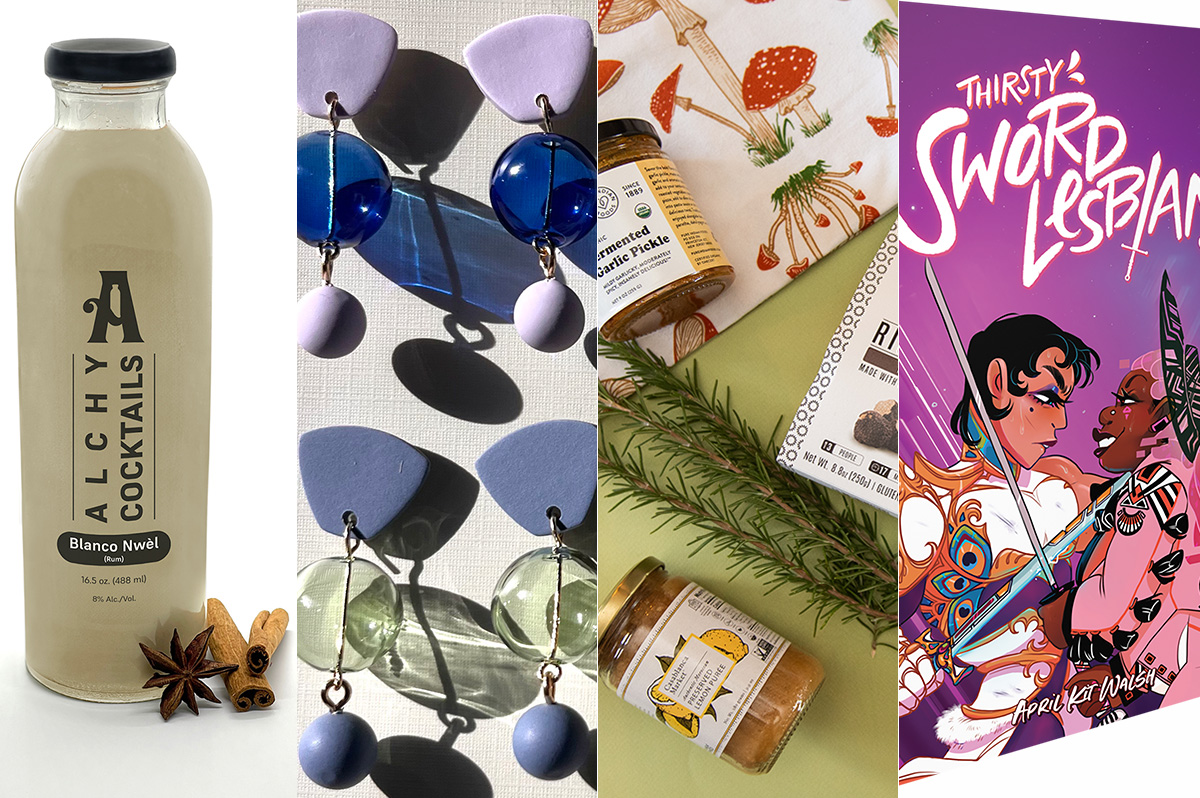
The DowntownDC Holiday Market is bustling. Union Station is decked out with its annual Christmas tree. Washingtonians have wrapped their houses and apartment balconies with festive lights and holiday decorations. The holiday season is here. And with stockings to fill and empty space under the tree, Washington’s local shops and artists have plenty to offer.
Show your LGBTQ and D.C. pride with the Washington Blade’s annual holiday gift guide.
To embrace the holiday buzz: The Blanco Nwèl cocktail from Alchy Cocktails. This Caribbean eggnog is one of Alchy Cocktail’s seasonal holiday cocktails. The flavor profile is similar to coquito, a traditional Puerto Rican Christmas drink with a coconut base. As a queer and Caribbean-owned business, Alchy Cocktails has been based out of Washington since 2021. Blanco Nwèl is available in both cocktail ($24) and mocktail ($12) online and at a variety of holiday markets, including the Tingey Plaza Holiday Market, the Flea Market at Eastern Market, Union Station’s Main Hall Holiday Market, and more. ($24)
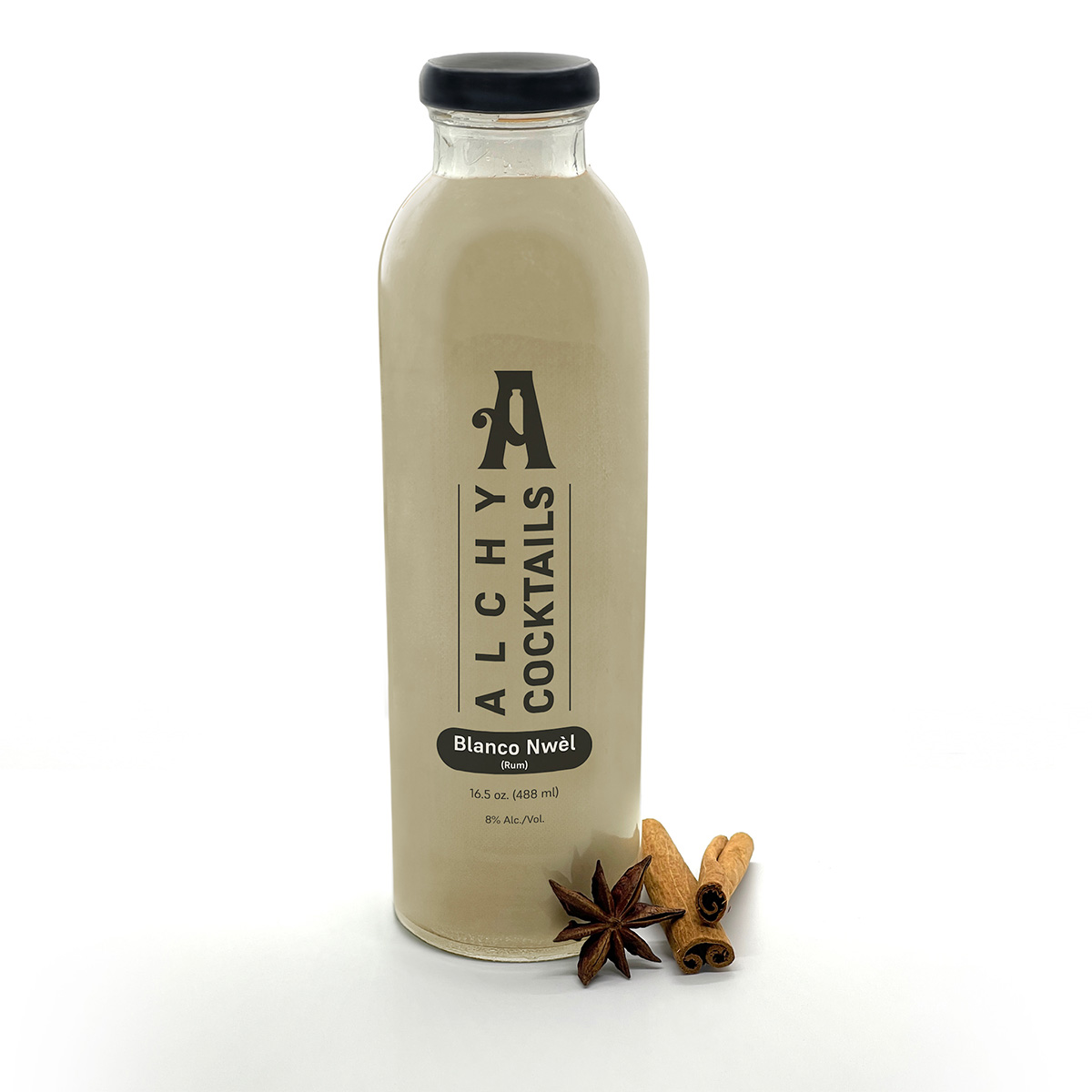
A spicy bite: Gordy’s Cajun Okra from Salt and Sundry. These spicy, tangy pickles pull on Southern Cajun-style flavors, packing a punch with paprika, cayenne, and more. Gordy’s is an LGBTQ-owned and Washington-based brand, making this gift an opportunity to support a local LGBTQ business straight from the jar. This pantry staple is available on Salt & Sundry’s website and at its locations in Union Market, Logan Circle, and its Georgetown holiday pop-up store. ($14)
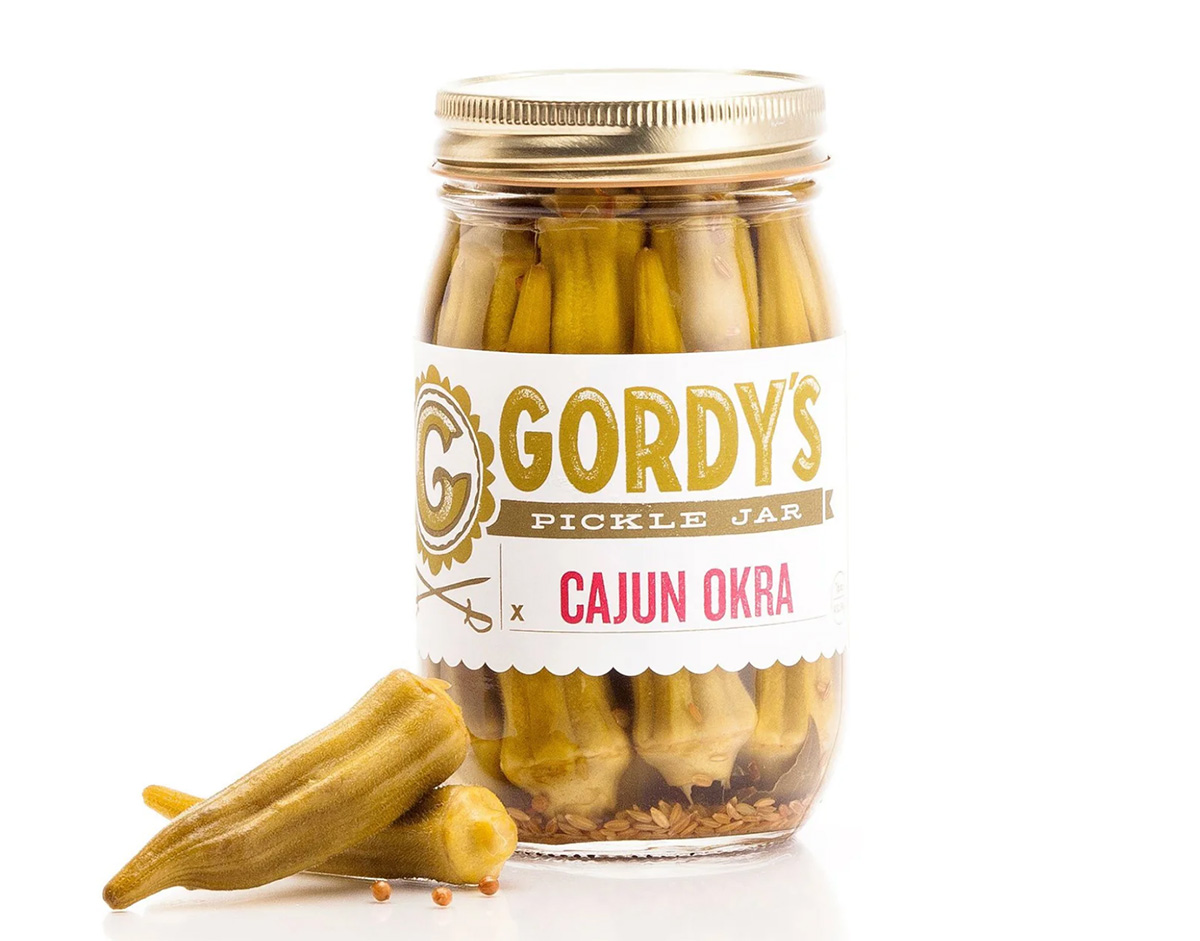

To celebrate Washington pride: The DC Landmark Tote Bag from The Neighborgoods. Native Washingtonians, visitors, friends and family alike will find something to love about this Washington-themed tote bag. Food trucks, the 9:30 Club, the Metro logo and pandas from the National Zoo are just some of the city’s landmarks depicted across the tote in a red, white, and blue color palette. The tote is a part of the DC Landmarks collection, which donates 10 percent of its sales to the American Civil Liberties Union. The Neighborgoods itself is a local, woman-owned business built out of a passion for screen-printing in 2013. The 100 percent cotton canvas tote is for sale online or at the DowntownDC Holiday Market. ($22)
To give friends and family their flowers: The Flowers Bandana from All Very Goods. This 100 percent cotton bandana was designed in Washington and hand printed in India. Its uniqueness comes in being covered with the faces of Black women, representing a “love letter to all women but especially Black women,” according to All Very Goods. The Black woman-owned and operated business, based out of Northwest Washington, has a mission to celebrate diversity and representation through its products. The bandana intends to give Black women their “flowers.” The Flowers bandana is available for purchase online. ($24)
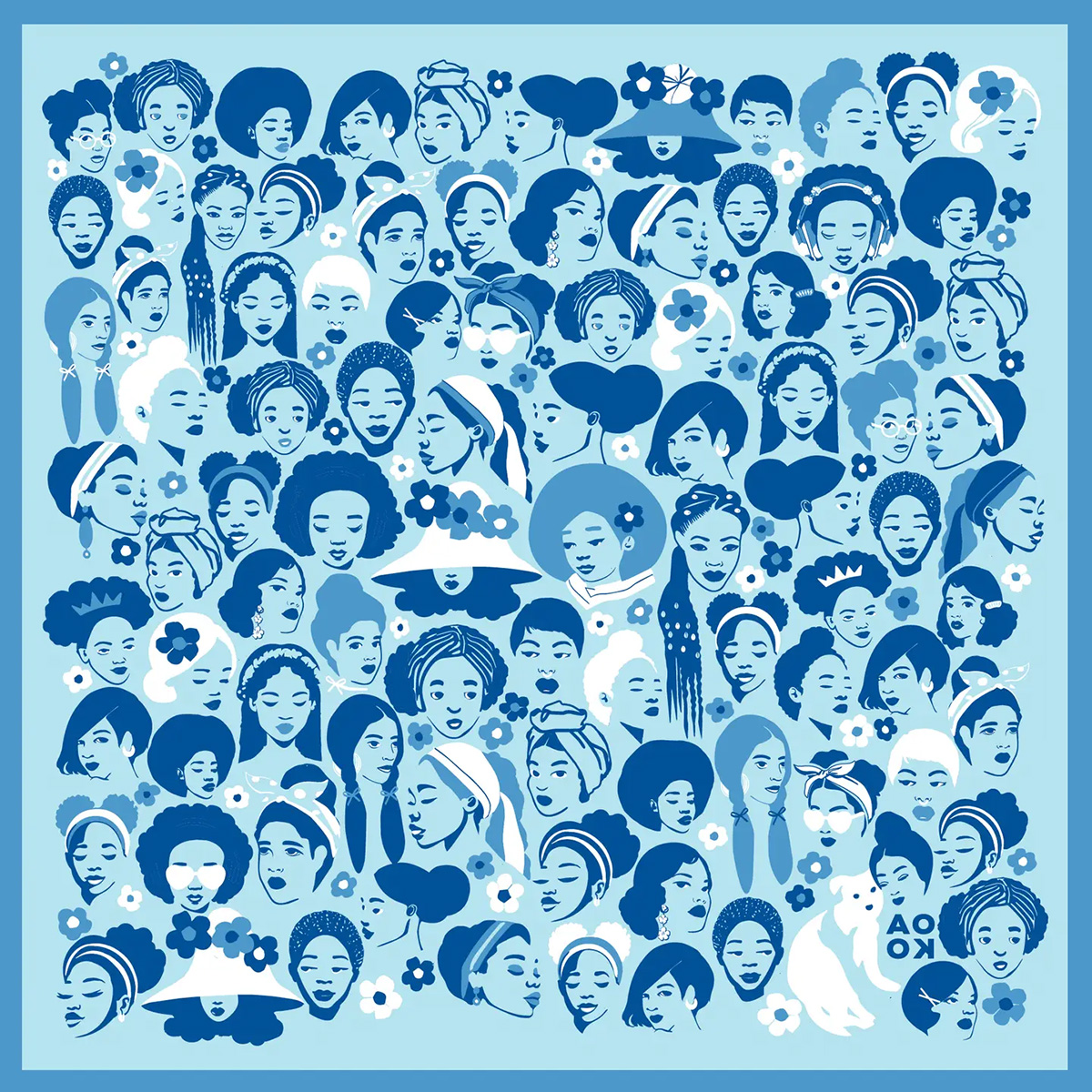
To unlock culinary creativity: The Curious Chef Gift Collection from Each Peach Market. This customizable collection of kitchen oddities — ranging from tinned fish to chili oil — is a quirky gift for the most inventive chefs. The collection is available in a Standard Santa, Extra Goodies and Super Holiday Size for up to $165. The Washington-based market, founded in 2013, permits customers to make the collection special by specifying what unique ingredients are packaged, including products made by local or LGBTQ brands. Each Peach Market offers assembly and pick up in-person at its Mount Pleasant shop and also offers local delivery and nationwide shipping via its website. ($85)
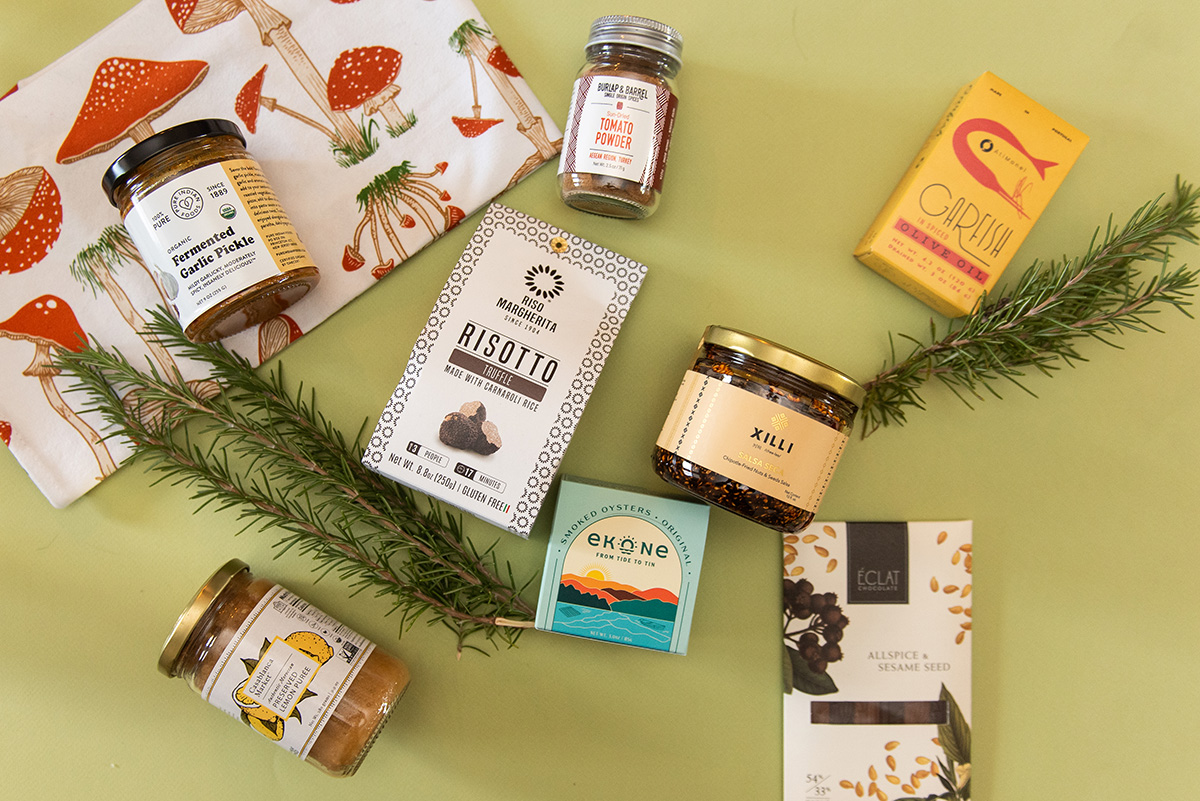
To give a touch of sweetness: The DC Landmark Chocolate Covered Oreo Holiday Cookies from Capital Candy Jar. Wrapped in a festive red bow, this box of nine cookies embraces love for Washington and the holiday season in one. Among the dark and milk chocolate covered cookies are images of the U.S. Capitol, the White House, the Lincoln Memorial, the Jefferson Memorial and festive hollies. The treat, packaged in a Hill East facility just a few blocks from the Capitol, is available for purchase online and at the DowntownDC Holiday Market. ($23.95)
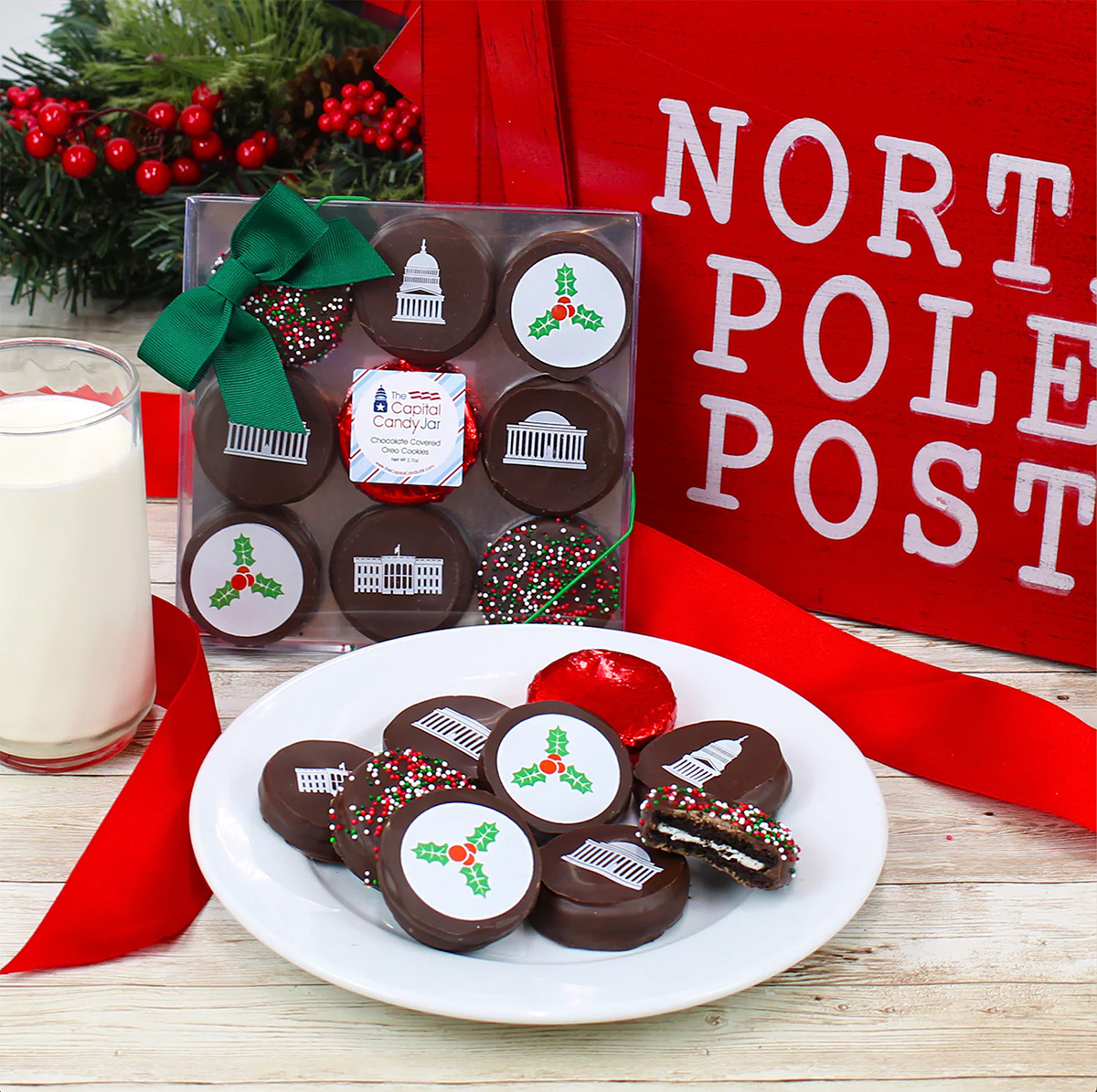
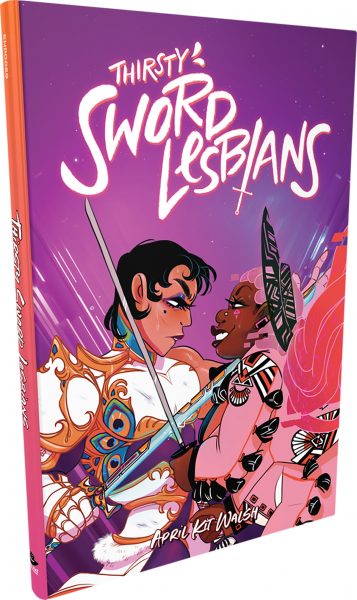
To celebrate queer gaming: Thirsty Sword Lesbians from Labyrinth Games & Puzzles. This roleplaying game embraces lesbian culture by unlocking a world of swords, romance, and battle. Ideal for group settings, the book presents a system of world building and character identities that are best brought to life by creative minds. Labyrinth, which has been a local Washington business for more than 15 years, celebrates non-digital fun through games and puzzles that connect the community. This gift is offered online and at Labyrinth’s Capitol Hill location. ($29.99)
To make a bold statement: The “Resist” T-shirt from Propper Topper. This locally screen-printed black tee features the Washington flag designed within a raised fist, symbolizing both Washington pride, and political resistance. The shirt is made exclusively by Propper Topper, a local Washington business that evolved from a hat shop to a gift store since opening in 1990. The tri-blend unisex shirt is available both for pickup at Propper Topper’s Cathedral Heights location and shipping via the online site. ($32)
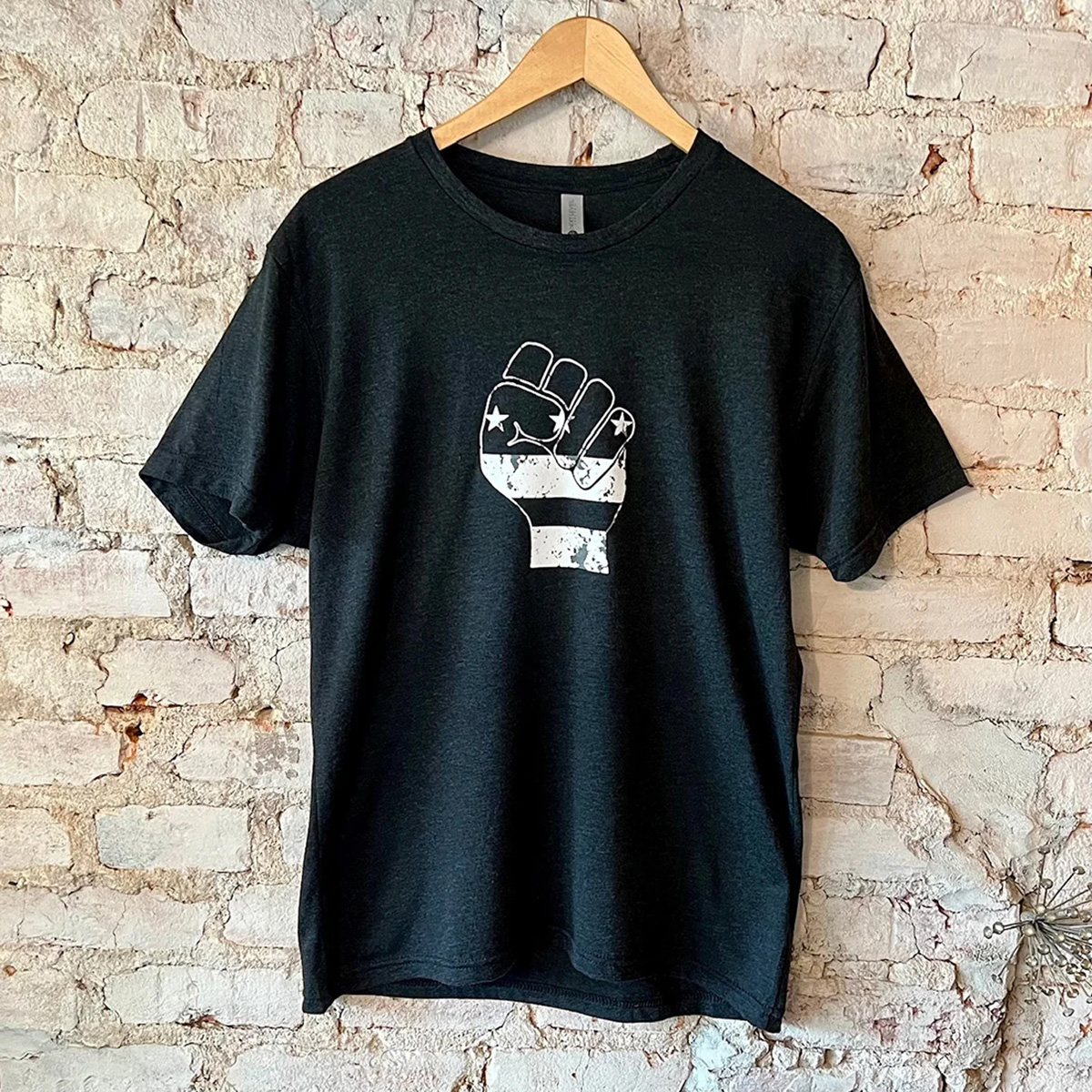
To keep it c(g)lassy: The Glass Ball earrings from Blue Moon Aquarius. Gifting can rarely go wrong when it comes to a new pair of earrings. The unique statement earrings — made of polymer clay, glass, and 18k gold plating over surgical steel — are hand cut, sanded and assembled in Washington, meaning each set is unique. Blue Moon Aquarius, a local brand, is known for its small batch jewelry and home decor designed with clay materials. Available in oxblood, hunter green, lavender, and bluestone color palettes, these earrings are available for purchase on Blue Moon Aquarius’ website and at the DowntownDC Holiday Market. ($48)
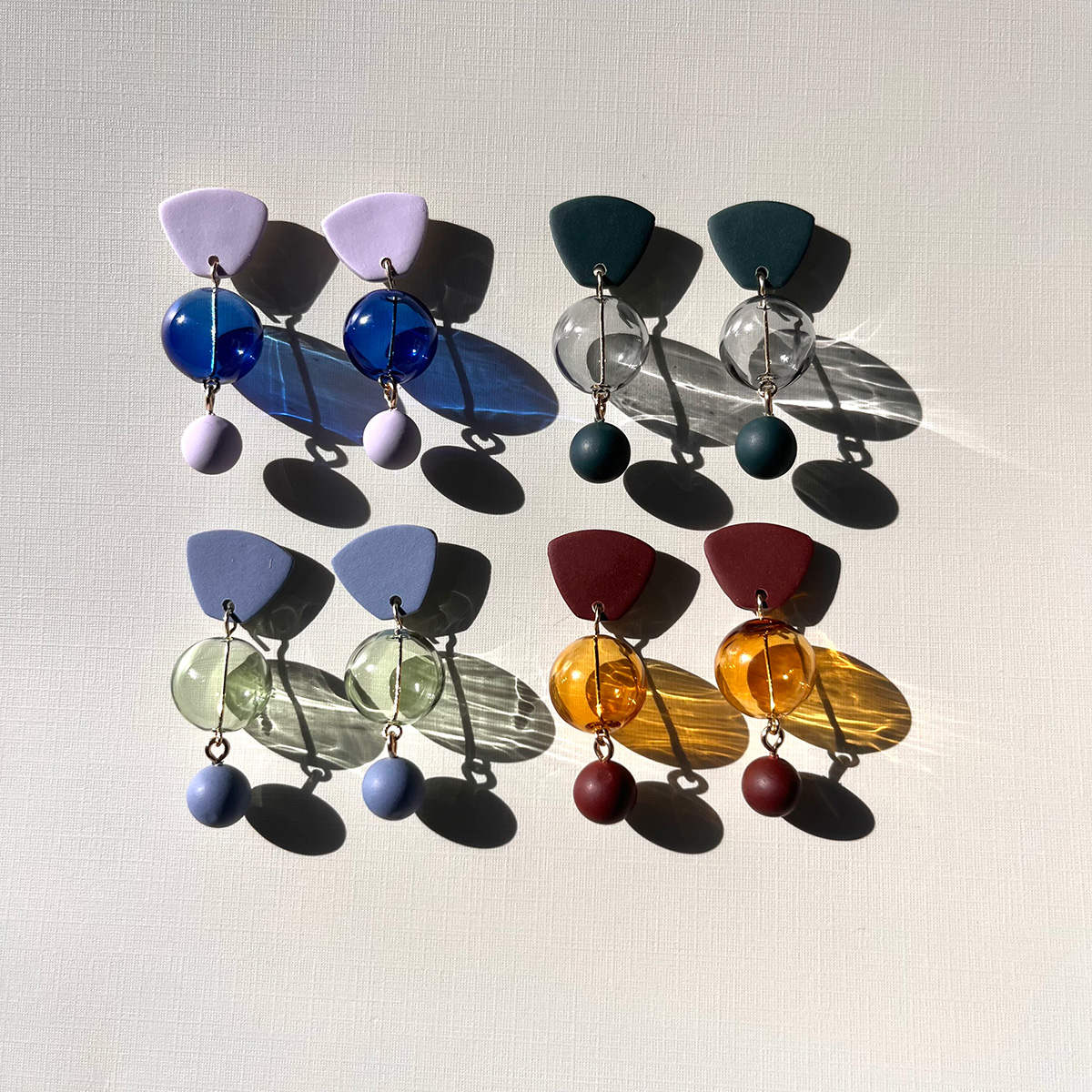
To elevate a holiday tea or charcuterie party: The Honey Flight: Tea Lover’s Selection from BannerBee. This local honey company presents the ideal gift to make cozying up with a cup of tea slightly more special. The Honey Flight contains three types of raw wildflower honey infused with fair trade Ugandan vanilla bean, chai spices, and locally sourced lemon thyme herb. The gift is also an opportunity to uplift a family company based in the Mid-Atlantic that offers all-natural, sustainable products. The flight is available online, at the DowntownDC Holiday Market or at the Arlington Courthouse and Dupont Farmers’ Markets. ($36)

For Baltimore shoppers: If you’re in Charm City, don’t miss Balston Mercantile, opened by a gay couple in June. Their gorgeous shop in the Hampden neighborhood offers an array of unique, upscale finds, from barware and artwork to cookbooks and home decor and more. (849 W. 36th St.)
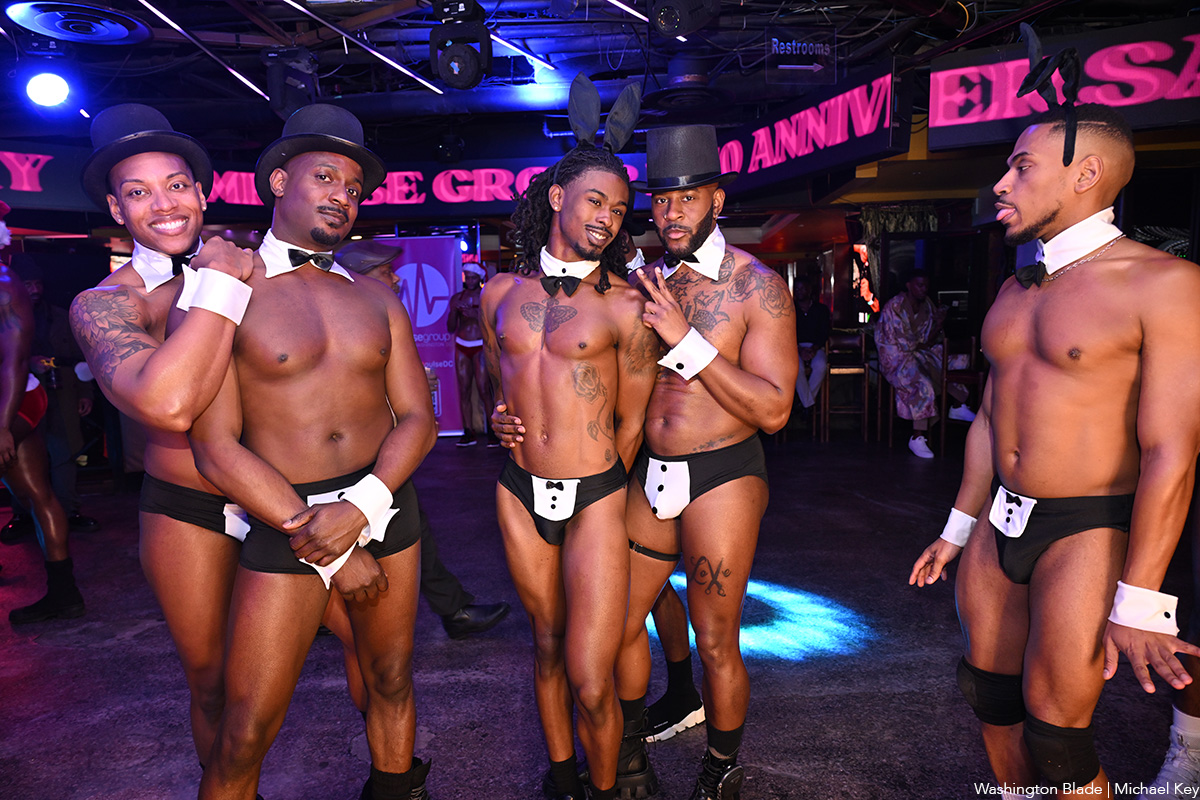
Impulse Group DC held “10’s Across the Board: A Celebration of 10 Years” at Bravo Bravo (1001 Connecticut Ave., N.W.) on Sunday, Dec. 14. Impulse Group DC is a volunteer-led 501(c)(3) and affinity group of AIDS Healthcare Foundation dedicated “to engaging, supporting, and connecting gay men” through culturally relevant health and advocacy work.
(Washington Blade photos by Michael Key)

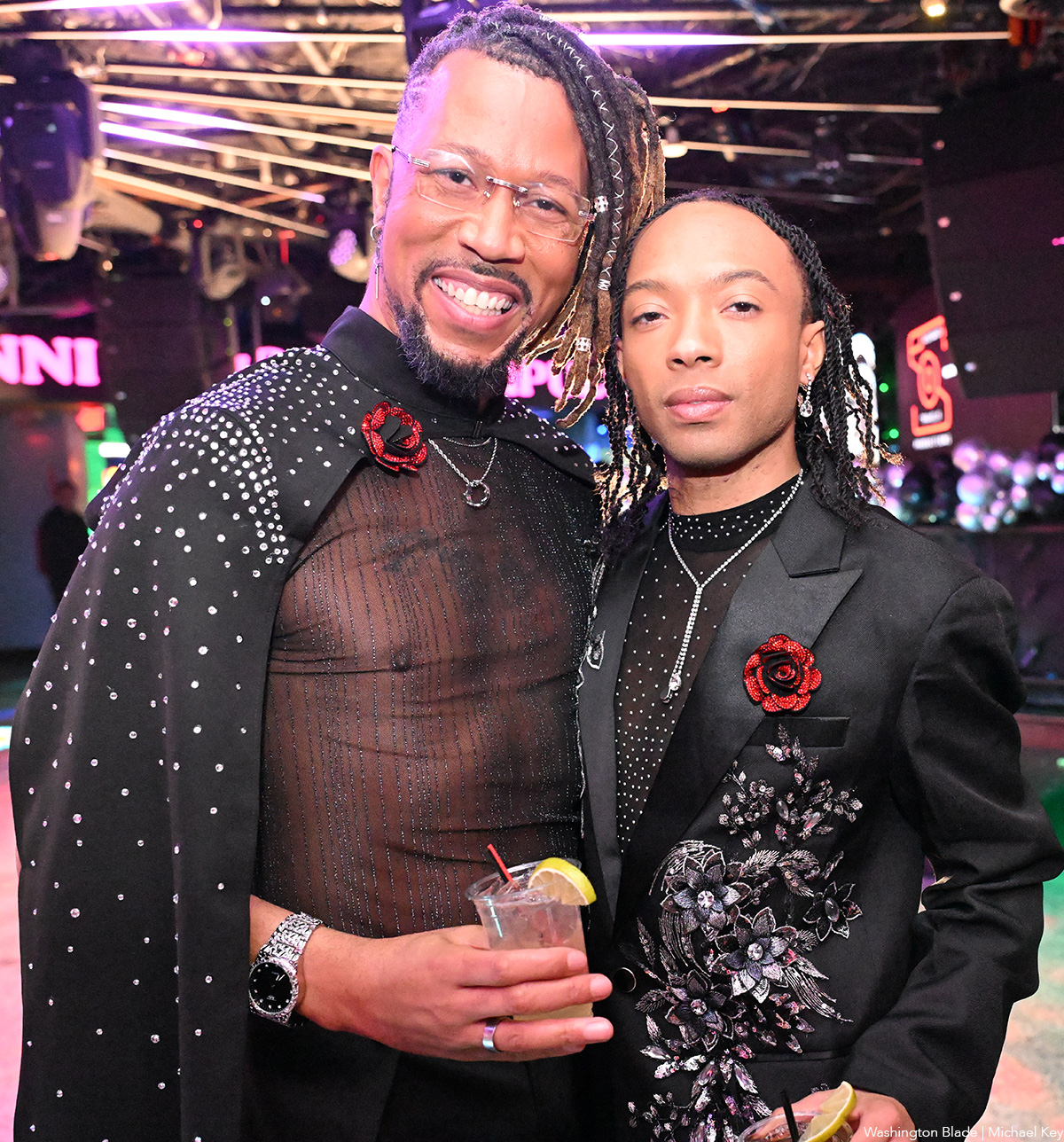
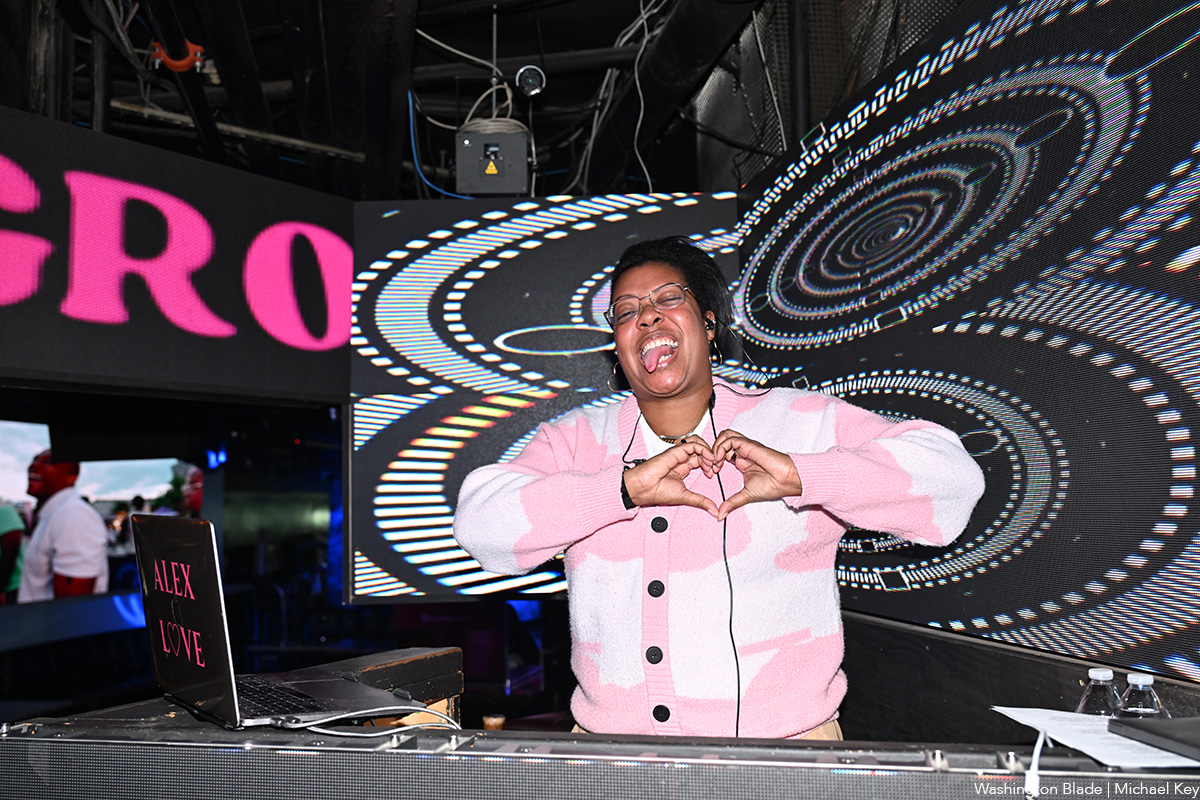
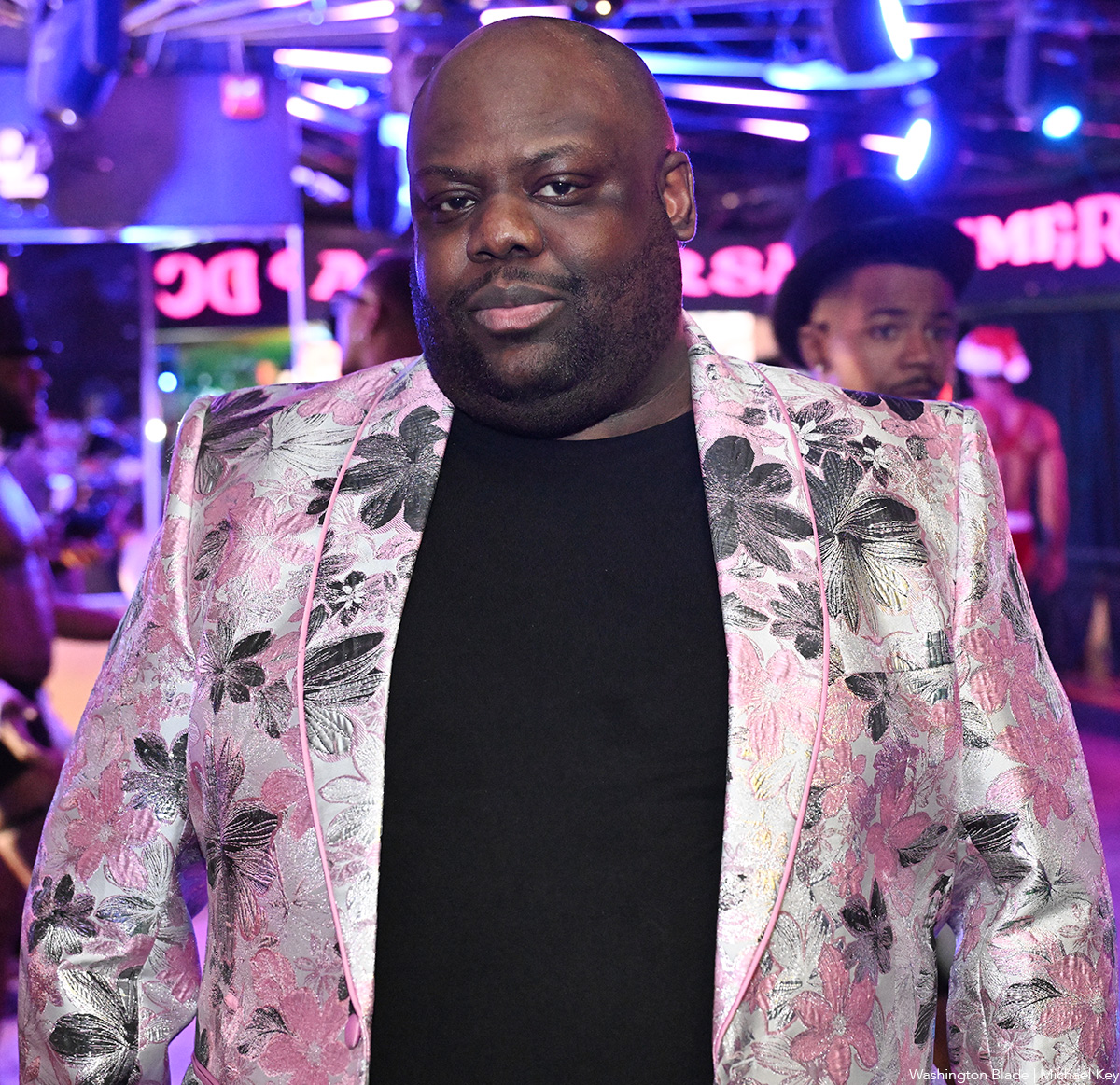
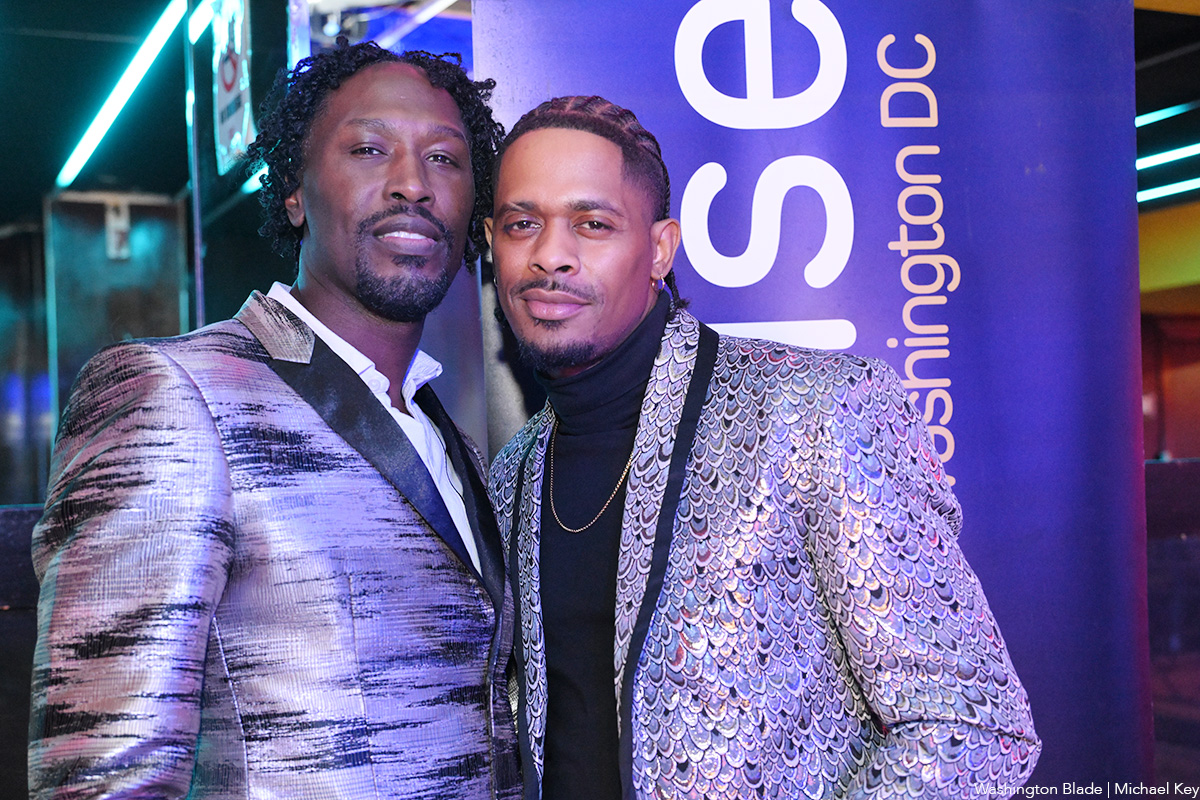
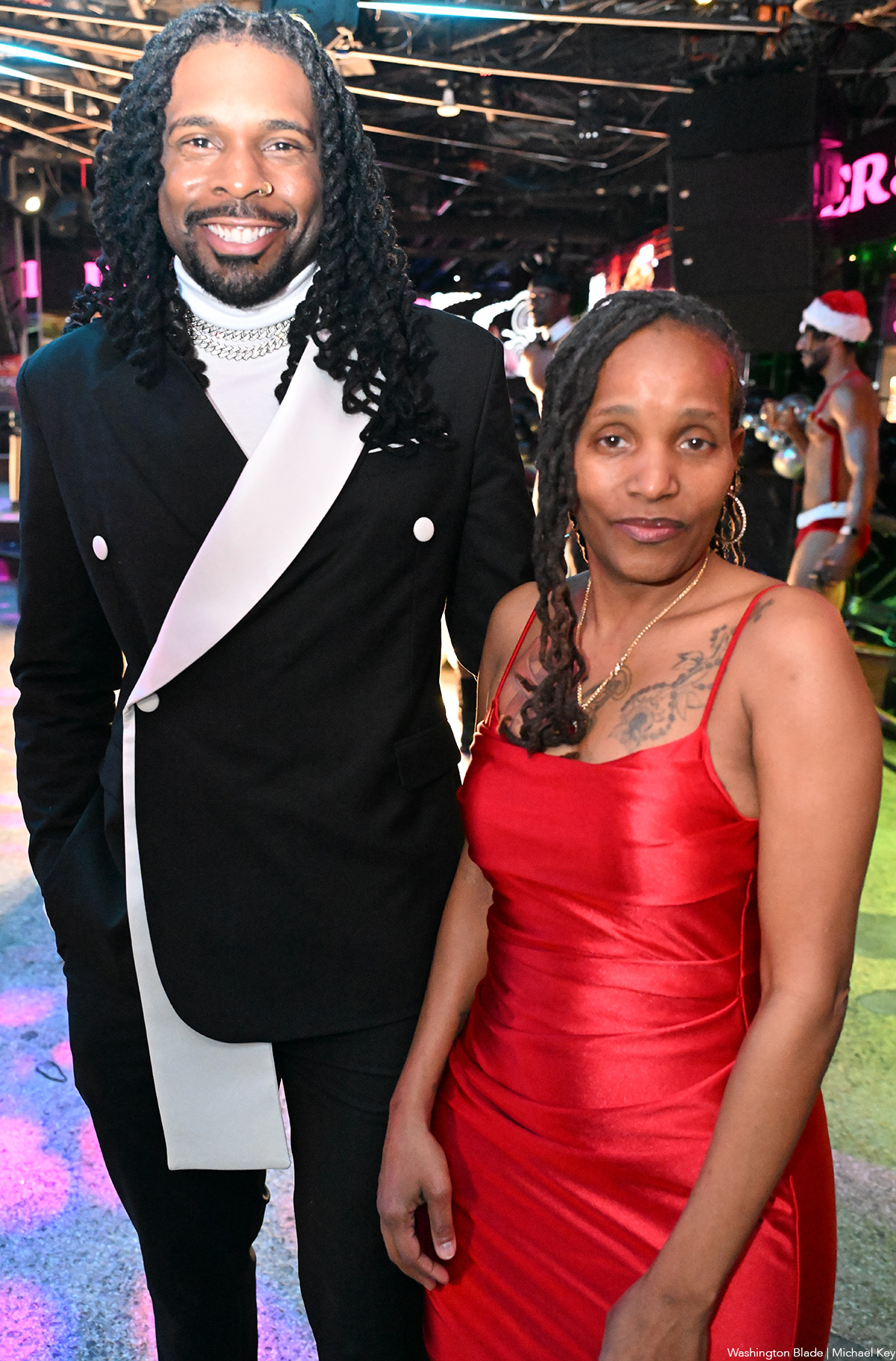
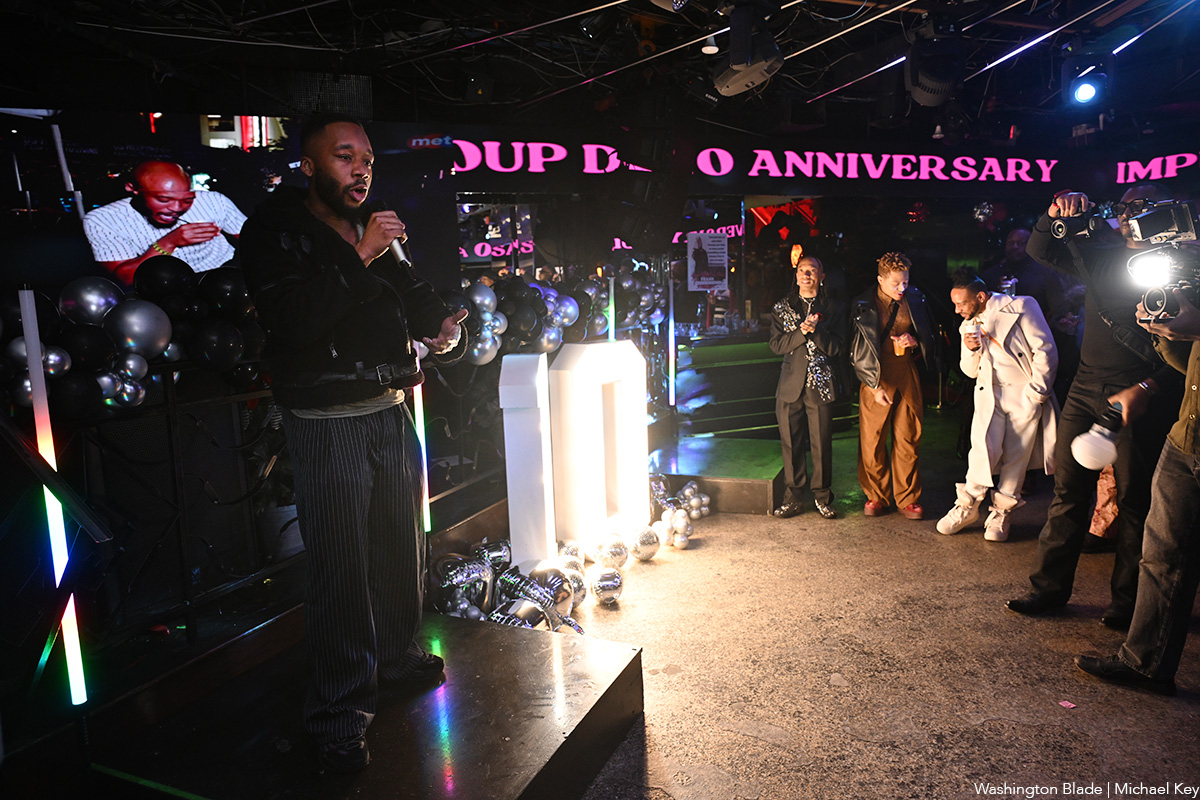
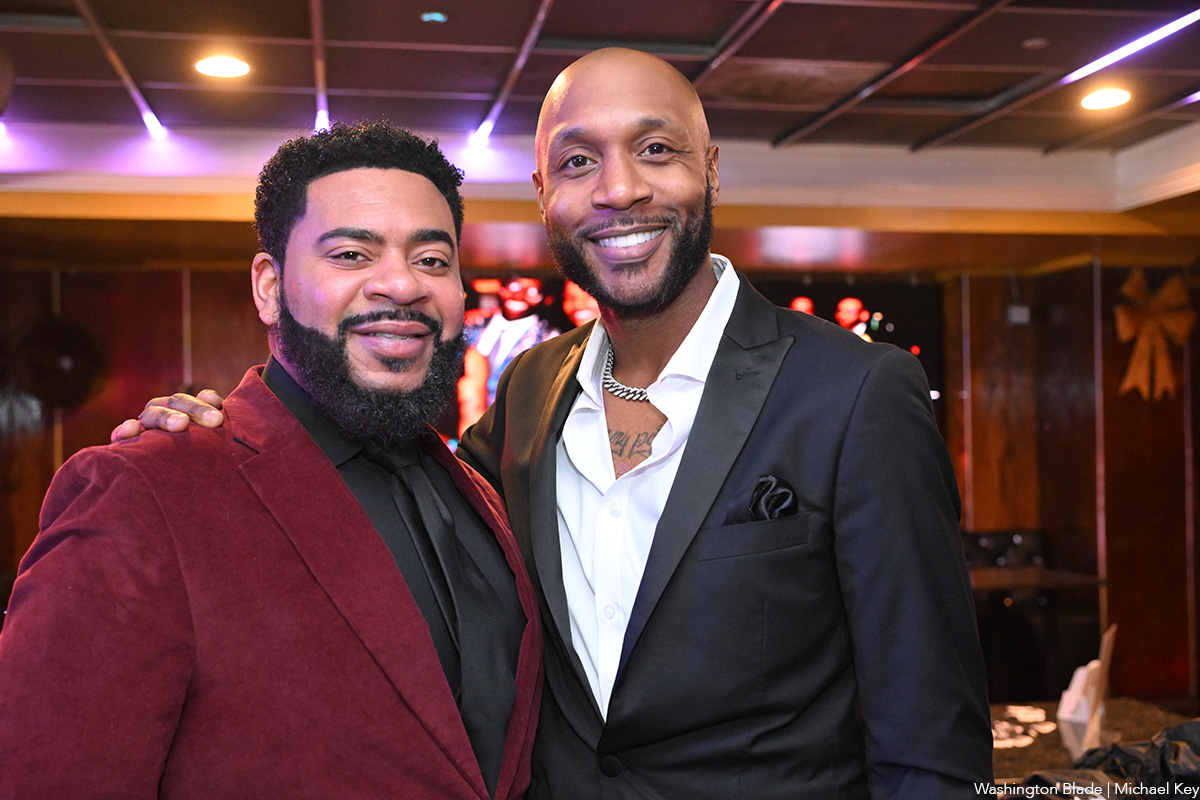
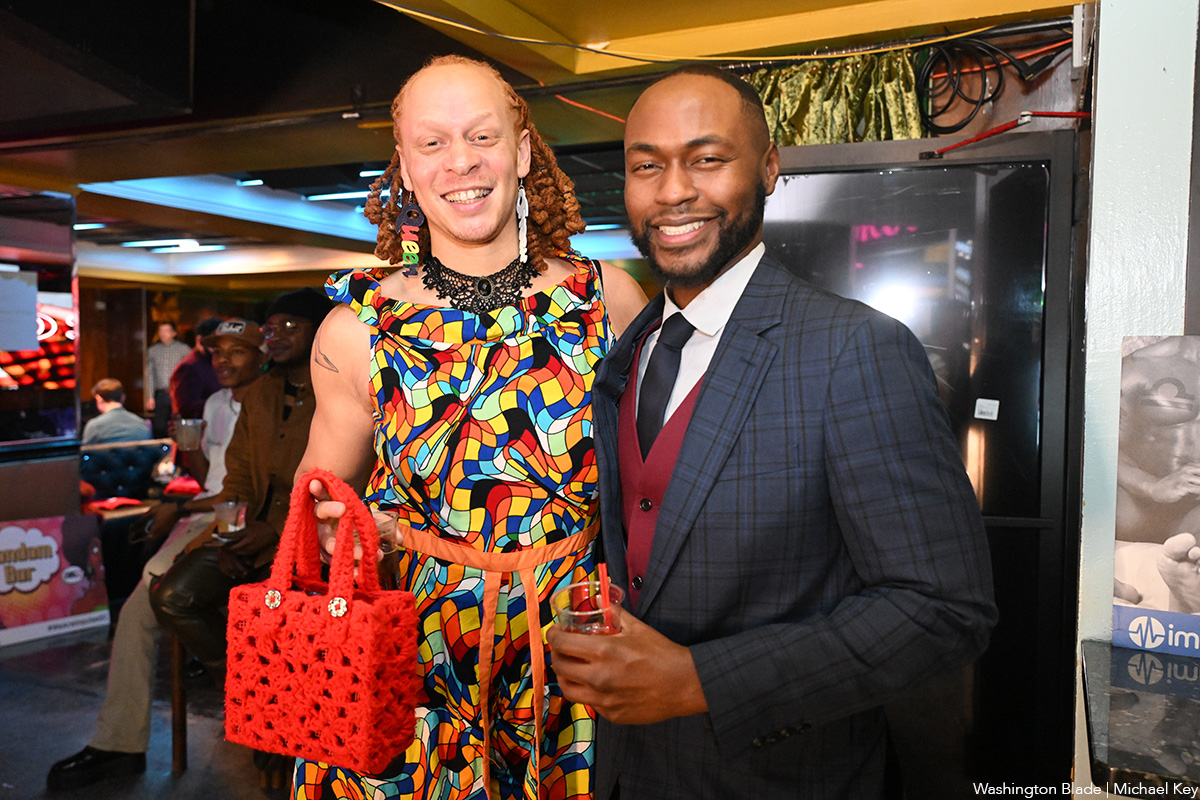
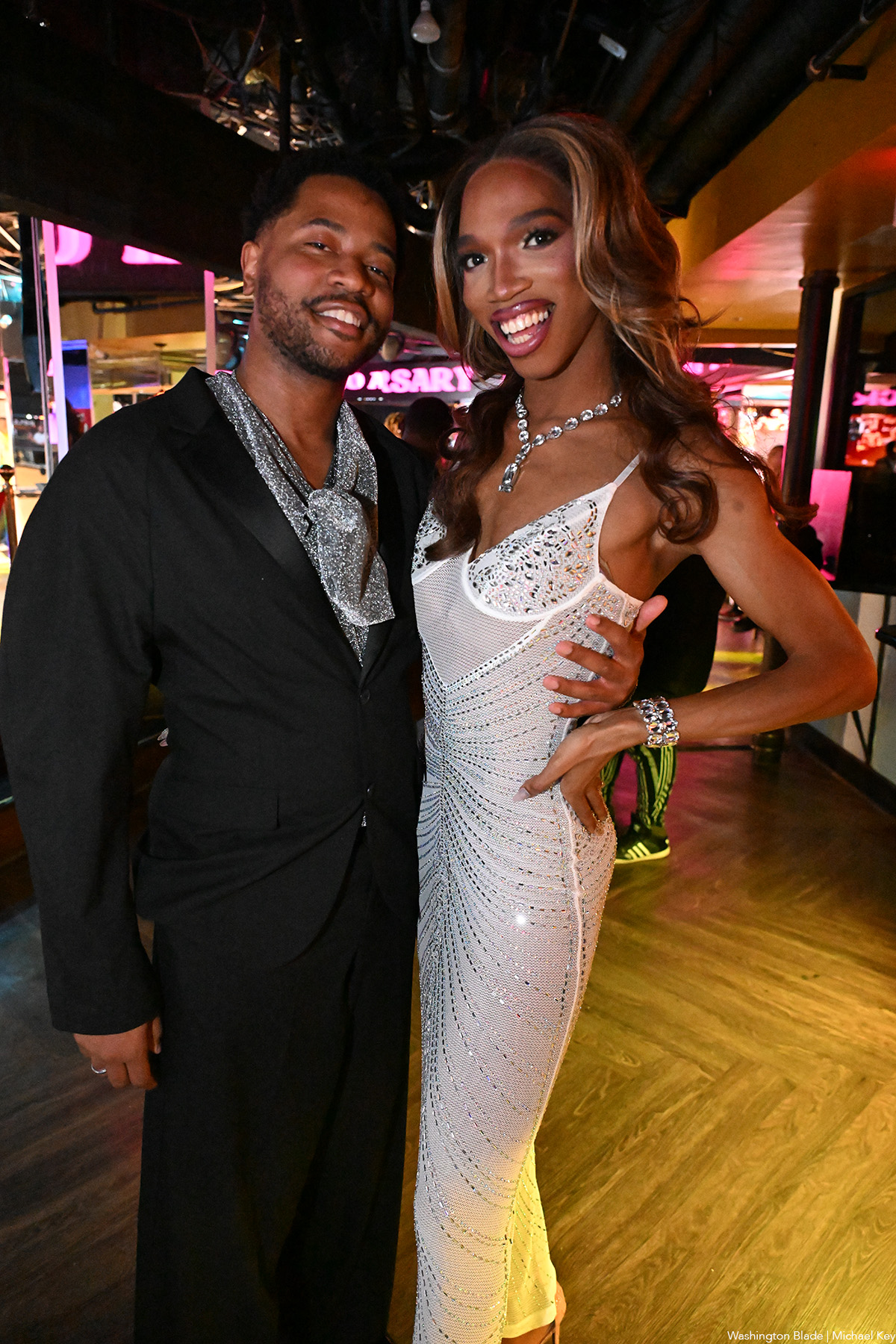
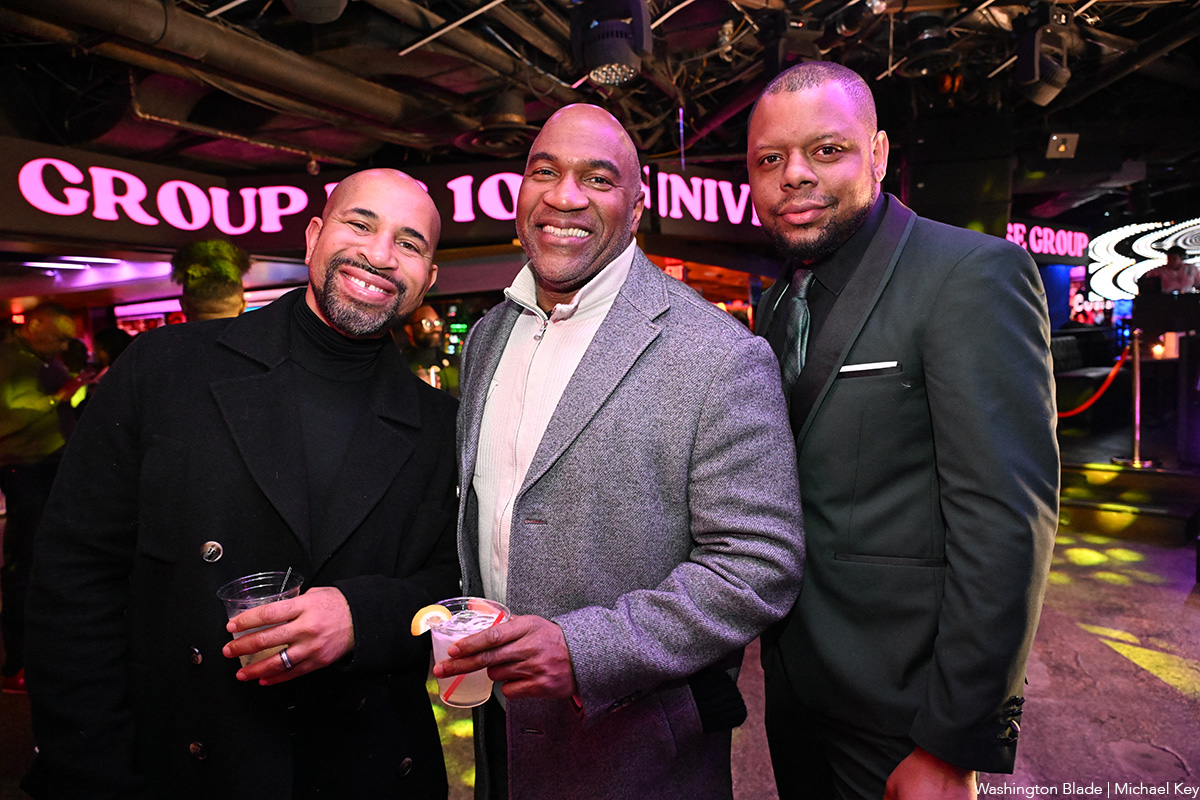
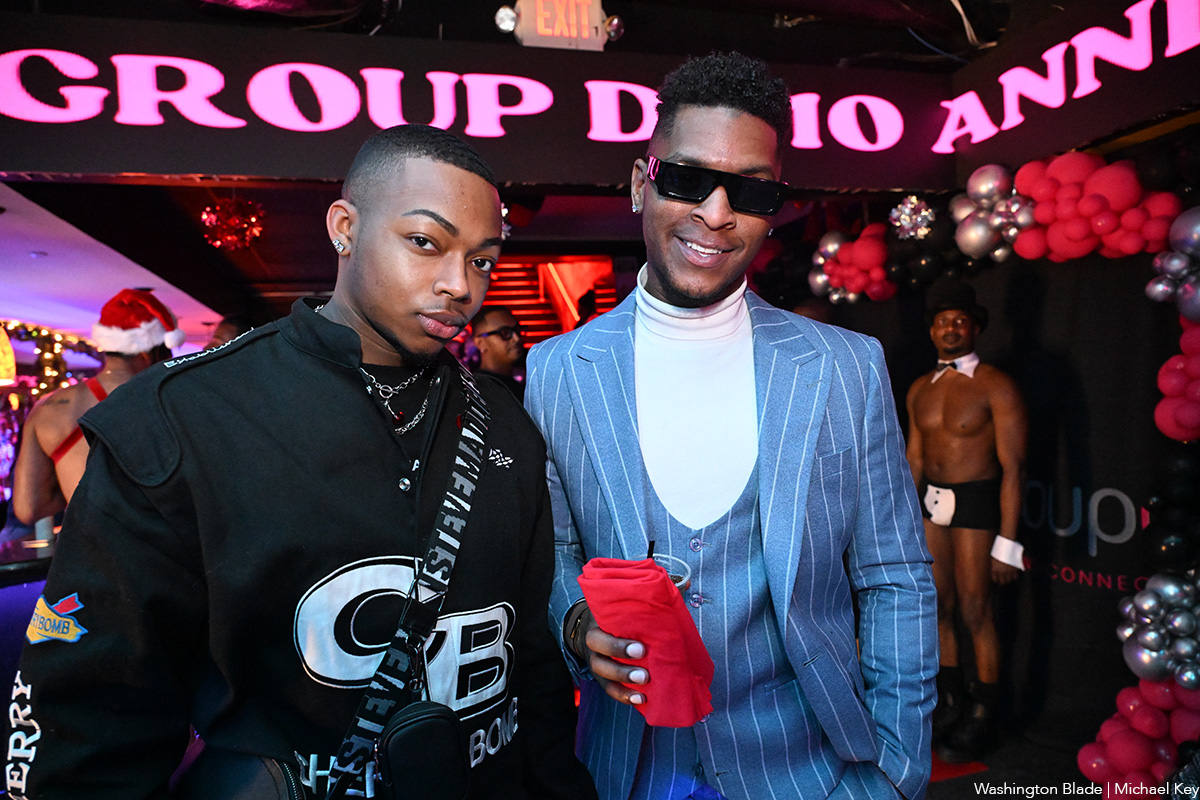
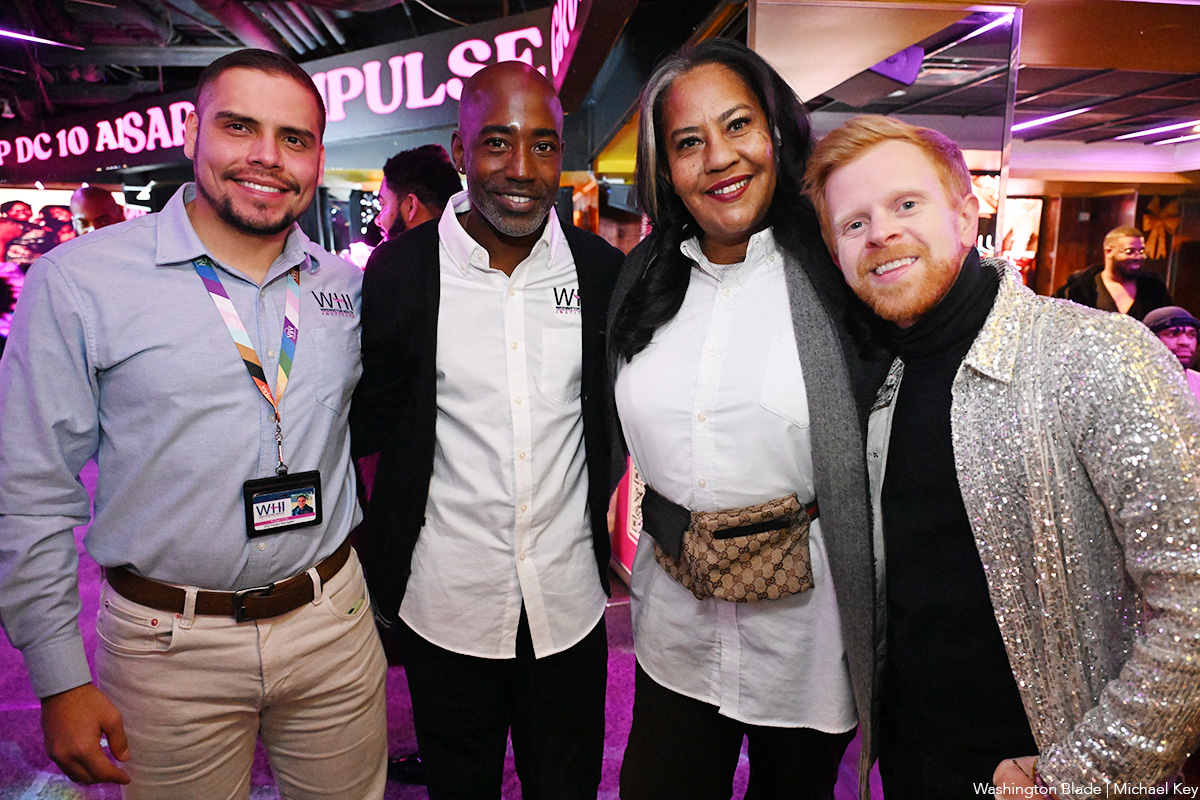

Rob Reiner, most known for directing untouchable classics like “The Princess Bride,” “Misery,” “When Harry Met Sally…,” and “Stand by Me,” died Dec. 14 alongside his wife, Michele Singer Reiner, in their Los Angeles residence. While investigations are actively underway, sources have told PEOPLE Magazine that the pair’s son, Nick Reiner, killed his parents and has been taken into custody.
Reiner was a master of every genre, from the romantic comedy to the psychological thriller to the coming-of-age buddy movie. But in addition to his renowned work that made him a household name, Reiner is also remembered as a true advocate for the LGBTQ community. In 2009, Reiner and his wife co-founded the American Foundation for Equal Rights, helping fight against California’s Prop 8 same-sex marriage ban. They were honored at the 2015 Human Rights Campaign Las Vegas Gala.
In a statement, HRC President Kelley Robinson said: “The entire HRC family is devastated by the loss of Rob and Michele Reiner. Rob is nothing short of a legend — his television shows and films are a part of our American history and will continue to bring joy to millions of people across the world. Yet for all his accomplishments in Hollywood, Rob and Michele will most be remembered for their gigantic hearts, and their fierce support for the causes they believed in — including LGBTQ+ equality. So many in our movement remember how Rob and Michele organized their peers, brought strategists and lawyers together, and helped power landmark Supreme Court decisions that made marriage equality the law of the land — and they remained committed to the cause until their final days. The world is a darker place this morning without Rob and Michele — may they rest in power.”
Reiner’s frequent collaborators have also spoken out as the industry is in mourning, including figures like Ron Howard and John Cusack.
A joint statement from Jamie Lee Curtis and Christopher Guest (who starred in Reiner’s “This is Spinal Tap”) reads: “Christopher and I are numb and sad and shocked about the violent, tragic deaths of our dear friends Rob and Michele Singer Reiner and our ONLY focus and care right now is for their children and immediate families and we will offer all support possible to help them. There will be plenty of time later to discuss the creative lives we shared and the great political and social impact they both had on the entertainment industry, early childhood development, the fight for gay marriage, and their global care for a world in crisis. We have lost great friends. Please give us time to grieve.”
While attending the 2019 HRC Los Angeles Dinner, Reiner spoke out about the need for equality: “We have to move past singling out transgender, LGBTQ, black, white, Jewish, Muslim, Latino. We have to get way past that and start accepting the idea that we’re all human beings. We’re all human beings, we all share the same planet, and we should all have the same rights, period. It’s no more complicated than that.”





